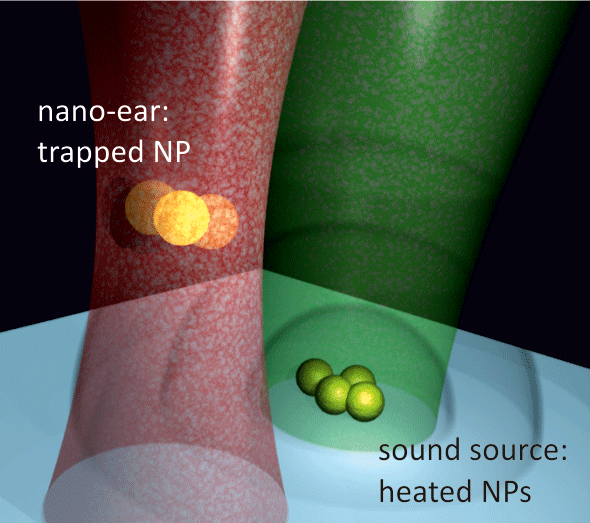Scientists create world’s tiniest ear
January 16, 2012 | Source: Science Now

An optically trapped nanoparticle can act as an ultrasensitive detector of sound. Pressure waves from a nearby sound source are detected by tracking the small displacements of a trapped gold nanoparticle from its equilibrium position in the neck of a focused laser beam (red region). The sound waves are produced by an aggregate of nanoparticles that vibrate when heated by a laser (green region). (Credit: A. Ohlinger et al./Physical Review Letters)
The “nano-ear,” a nanoparticle of gold 60 nanometers in diameter held in optical tweezers (a laser beam) can detect sound at -60 dB, a million times fainter than the threshold for human hearing.
The Ludwig Maximilian University researchers suggest the work could open up a whole new field of “acoustic microscopy,” in which organisms are studied using the sound they emit, using 3D arrays of nano-ears working together to listen in on cells or microorganisms such as bacteria and viruses.
Ref.: Alexander Ohlinger et al., Optically Trapped Gold Nanoparticle Enables Listening at the Microscale, Physical Review Letters, 2012 [DOI: 10.1103/PhysRevLett.108.018101]